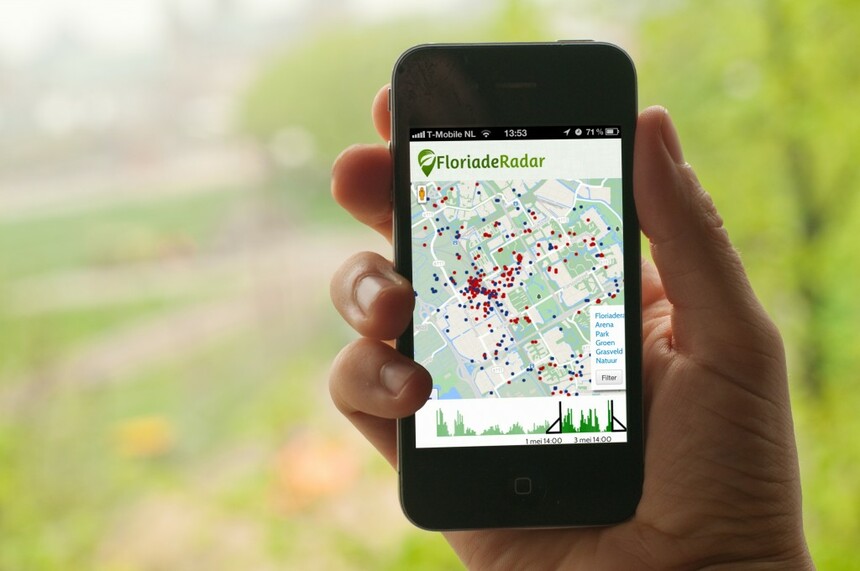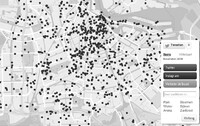FloriadeRadar
Commissioned by the Gemeente Amsterdam Dienst Ruimtelijke Ordening (Amsterdam Physical Planning Department), The FloriadeRadar was an experiment into mapping the social-media landscape as a tool for urban planning. It was commissioned by the Gemeente Amsterdam Dienst Ruimtelijke Ordening (Amsterdam Physical Planning Department) as part of Amsterdam’s bid to host the 2022 Floriade (the Dutch national horticultural expo) in the Bijlmer. It harnessed and filtered the activity of three popular social-media services into a real-time online map interface, making it simple and fast for sense to be made from the huge volume of digital activity that addresses the city and its public space.
I was approached by Non-fiction to build this service. They have started working for the Physical Planning Department of the City of Amsterdam (DRO), in an effort to explore the opportunities of realtime analytics for longterm physical planning for Amsterdam. In this light, Non-fiction approached me to build a weather map of checkins, captions and other site-specific online social activities in Amsterdam Holendrecht, using the most commonly used mobile media Foursquare, Instagram and Twitter.
What did I build?
The FloriadeRadar (or, Geoheap, as the project is called internally) is a "social weather map" of Amsterdam. Or, in geek terms: an Erlang-powered location-based-services aggregator engine with a Google maps browsing interface.
The geoheap is a constantly-running aggregation service which continiously gathers data from Twitter, Instagram and Verbeter de Buurt and stores every item in a MongoDB database. A search index (powered by Solr) makes this data available to a realtime visualization. The fullscreen map interface has a search bar to filter for certain keywords and/or user names. The time bar at the bottom shows the volume of social objects (tweets, pictures, ...) of the last week.
Unfortunately the service is currently offline for maintainance as we're in the process of moving it to a virtual server with more processing capacity.
The project's source code is available on github.
Keywords
More images
« Previous project Next project »


